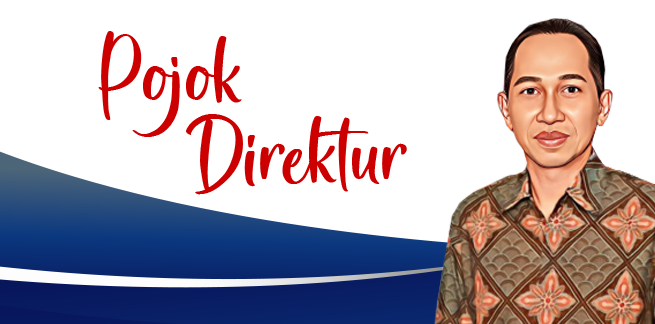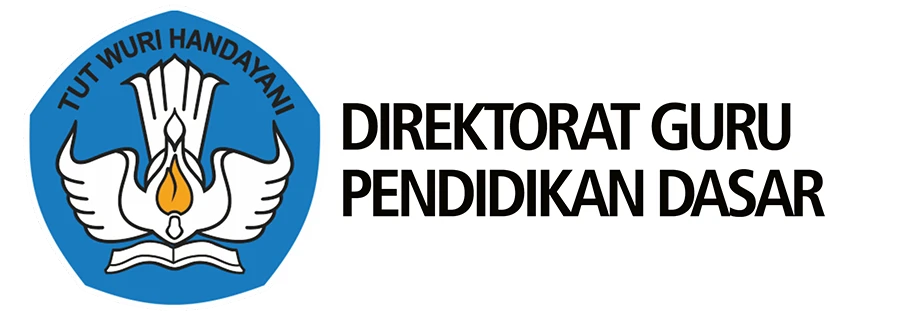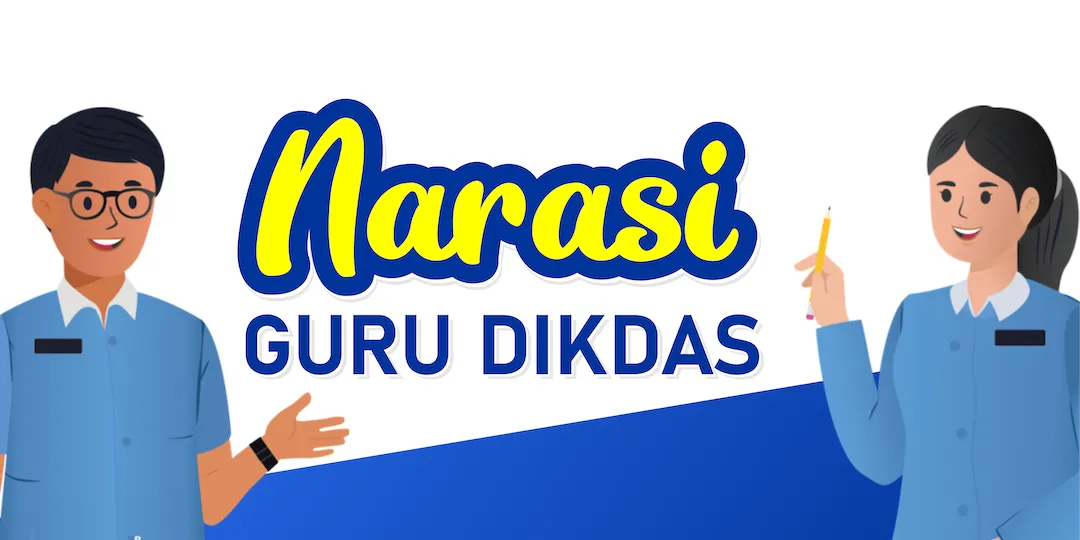Developing Graded English Tasks (GET) for Differentiated English Instruction at Junior High School
DOI:
https://doi.org/10.26811/didaktika.v8i3.1727Abstract
Learning that accommodates the needs of all students is necessary in the classroom. However, in schools that provide inclusive education, the needs of special needs students are often overlooked. In this study, differentiated instruction using graded tasks was chosen to overcome the problem. This study aims to develop graded English tasks (GET) to accommodate the different readiness to learn and needs of special needs students in the classroom. This research is a Research and Development (R&D) study conducted using the ADDIE model (Analysis, Design, Development, Implementation, and Evaluation). Data in this study were collected through questionnaires, performance assessments, reflections, observations, and interviews. Furthermore, quantitative data in this study were analyzed with descriptive statistics. Qualitative data were analyzed using Bogdan & Biklen's approach. From the expert judgment results, Graded English Tasks (GET) received scores ranging from 4.17 to 5.00 which means that the GET developed is good and ready to be used in differentiated instruction in the classroom. The use of GET is proven to accommodate differences in students' readiness to learn, increase students' engagement in learning, and improve students' speaking and presentation skills. GET can be used in differentiated instruction in junior high school English classes.
References
Ahmad, F. S., Yumelking, M., & Igolois Grenga Uran, S. (2023). The Use of Genre-based Approach to Improve Students’ Writing Skill on Narrative Text for Tenth Grader in the Academic Year of 2023 / 2024. Jurnal Pendidikan Multidisipliner, 6(3), 416–424. https://edu.ojs.co.id/ index.php/jpm/article/view/94.
Bogdan, R. C., & Biklen, K. S. (1982). Qualitative Research for Education: an Introduction to Theory and Methods. Allyn and Bacon, Inc.
Branch, R. M. (2010). Instructional design: The ADDIE approach. In Instructional Design: The ADDIE Approach. Springer Science & Business Media. https://doi.org/10.1007/978-0-387-09506-6.
Brennan, A. (2019). Differentiation through Choice as an Approach to Enhance Inclusive Practice. Journal of Inclusive Education in Ireland, 32(1), 11–20. https://www.reachjournal.ie/index.php/reach/article/ view/13.
Chapman, C., & King, R. (2011). Differentiated Assessment Strategies: One Tool Doesn’t Fit All. Corwin Press.
Corno, L. (2008). On Teaching Adaptively. Educational Psychologist, 43(3), 161–173. https://doi.org/10.1080/00461520802178466.
Darici, A. (2016). The Importance of Needs Analysis in Materials Development. In Issues in Materials Development. Critical New Literacies: The Praxis of English Language Teaching and Learning (PELT). Sense Publishers. https://doi.org/10.29303/jipp.v4i2.88.
Dixon, F. A., Yssel, N., McConnell, J. M., & Hardin, T. (2014). Differentiated Instruction, Professional Development, and Teacher Efficacy. Journal for the Education of the Gifted, 37(2), 111–127. https://doi.org/10.1177/ 0162353214529042.
Dotger, S., & Causton-Theoharis, J. (2010). Differentiation through choice: Using a think-Tac-Toe for Science Content. Science Scope, 33(6), 18–23. https://eric.ed.gov/?id=EJ878038.
Fajariyah, L. A. (2023). Developing a Differentiated English Language Assessment (DELA) Model for Junior High School Students. Yogyakarta State University.
Fajariyah, L. A., Retnawati, H., & Madya, S. (2023). Exploring Students’ Diversity in a Differentiated Classroom. LEARN Journal: Language Education and Acquisition Research Network, 16(2), 205–219. https://so04.tci-thaijo.org/index.php/LEARN/article/view/266942.
Feez, S., & Joyce, H. (1998). Text-based Syllabus Design. Macquarie University.
Harmer, J. (2001). How to teach English. Longman.
Heinich, R., Molenda, M., & Russell, J. D. (2002). Instructional Media and Technologies Learning. Prentice Hall.
Kemdikbud. (2018). Peraturan Menteri Pendidikan Dan Kebudayaan Nomor 14 tahun 2018.
Kemdikbudristek. (2022a). Keputusan Kepala Badan, Kurikulum, dan Asesmen Pendidikan, Kebudayaan, Riset, dan Teknologi no 033/H/KR/2022 tentang Perubahan atas Keputusan No 008/H/KR/2022 tentang Capaian Pembelajaran.
Kemdikbudristek. (2022b). Permendikbudristek No 16 Tahun 2022 ttg Standar Proses.
Kemdikbudristek. (2022c). Permendikbudristek No 21 Tahun 2022 tentang Standar Penilaian Pendidikan.
Kemdikbudristek. (2024). Permendikbudristek Nomor 8 Tahun 2024 Tentang Standar Isi pada Pendidikan Anak Usia Dini, Jenjang Pendidikan Dasar, dan Jenjang Pendidikan Menengah.
Kemdiknas. (2009). Peraturan Menteri Pendidikan Nasional No 70 tahun 2009.
Madya, S. (2013). Metodologi pengajaran bahasa: dari era metode sampai era pasca metode. UNY Press.
Nasution, S. S., Jamalulael, A., Kusumoriny, L. A., Sukmawati, N. N., & Sitepu, S. S. W. (2022). Genre-Based Instruction: Improving the Students’ Skill in Writing Descriptive Text. IDEAS: Journal on English Language Teaching and Learning, Linguistics and Literature, 10(2), 1724–1734. https://doi.org/10.24256/ideas.v10i2.2986.
Nusser, L., & Gehrer, K. (2020). Addressing Heterogeneity in Secondary Education: who Benefits from Differentiated Instruction in German Classes? International Journal of Inclusive Education. https://doi.org/ 10.1080/13603116.2020.1862407.
Polat, M. (2020). Identifying, Measuring and Addressing Language Learners’ Needs. 12(2), 421–435. https://www.researchgate.net/publication/ 353946002.
Pozas, M., & Schneider, C. (2019). Shedding Light on the Convoluted Terrain of Differentiated Instruction (DI): Proposal of a DI Taxonomy for the Heterogeneous Classroom. Open Education Studies, 1(1), 73–90. https://doi.org/10.1515/edu-2019-0005.
Richard, J. C. (2006). Communicative language teaching today. Cambridge University Press.
Richards, M. R. E., & Omdal, S. N. (2007). Effects of Tiered Instruction on Academic Performance in a Secondary Science Course. Journal of Advanced Academics, 18(3), 424–453. https://files.eric.ed.gov/ fulltext/ EJ773186.pdf.
Sousa, D. A., & Tomlinson, C. A. (2011). Differentiation and the Brain: How Neuroscience Supports the Learner–friendly Classroom. Solution Tree Press.
Sternberg, R. J., & Grigorenko, E. L. (2005). Intelligence and culture: how culture shapes what intelligence means, and the implications for a science of well-being. The Science of Well-Being, 15(1), 583–605. https://doi.org/10.1093/acprof.
Subban, P. (2006). Differentiated instruction: A research basis. International Education Journal, 7(7), 935–947.
Tabrani, Z. A. (2021). Back to Nature: Sebuah Tinjauan Filosofis tentang Konsep Pendidikan Rousseau. Jurnal Mudarrisuna: Media Kajian Pendidikan Agama Islam, 11(4), 851-868. http://dx.doi.org/10.22373/jm.v11i4.6585
Tieso, C. (2005). The Effects of Grouping Practices and Curricular Adjustments on Achievement. Journal for the Education of the Gifted, 29(1), 60–89. https://doi.org/10.1177/016235320502900104.
Tomlinson, C. . (2014). The Differentiated Classroom: Responding to the Needs of all Learners (2nd ed.). Association for Supervision and Curriculum Development.
Tomlinson, C., & Moon, T. R. (2013). Assessment and Student Success in a Differentiated Classroom. www.ascd.org/memberbooks.
Tomlinson, C. A. (2000). Reconcilable Differences: Standards-based Teaching and Differentiation. . Educational Leadership, 58(1), 6–11. https://eric.ed.gov/?id=EJ614602.
Tomlinson, C. A. (2001). Differentiated Classroom: Responding to the Needs of all Learners. ASCD.
Tomlinson, C. A., & Imbeau, M. B. (2010). Leading and Managing a Differentiated Classroom. In Association for Supervision and Curriculum Development.
Valiandes, S., Neophytou, L., & Hajisoteriou, C. (2018). Establishing a Framework for Blending Intercultural Education with Differentiated Instruction. Intercultural Education, 29(3), 379–398. https://doi.org/ 10.1080/14675986.2018.1441706.
Walidin, W., Idris, S., & Tabrani ZA. (2015). Metodologi Penelitian Kualitatif & Grounded Theory. Banda Aceh: FTK Ar-Raniry Press.
Westwood, P. S. (2018). Inclusive and Adaptive Teaching: Meeting the Challenge of Diversity in the Classroom. Routledge.
Xamre, S., & Kizi, N. (2022). Psychological Characteristics of Adolescents in Foreign Language Teaching. European Journal of Humanities and Educational Advancements (EJHEA), 3(3), 108–110. https://www.scholarzest.com/index.php/ejhea/article/view/1914.
Published
Issue
Section
License
Copyright (c) 2024 Jurnal Didaktika Pendidikan Dasar

This work is licensed under a Creative Commons Attribution-ShareAlike 4.0 International License.
















